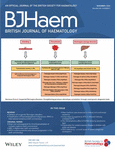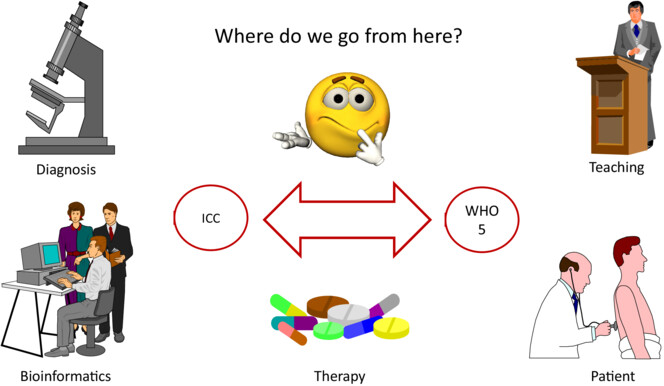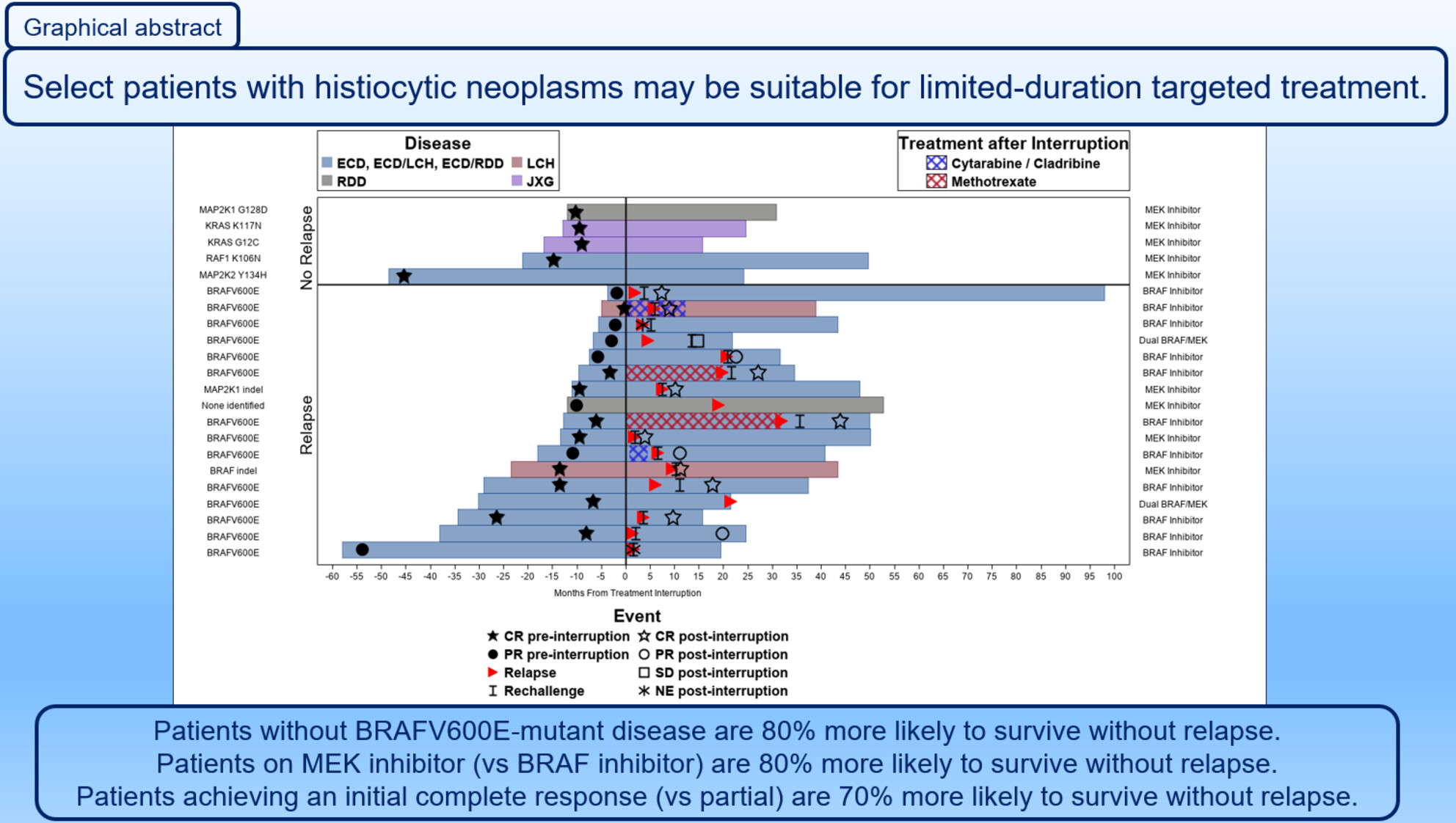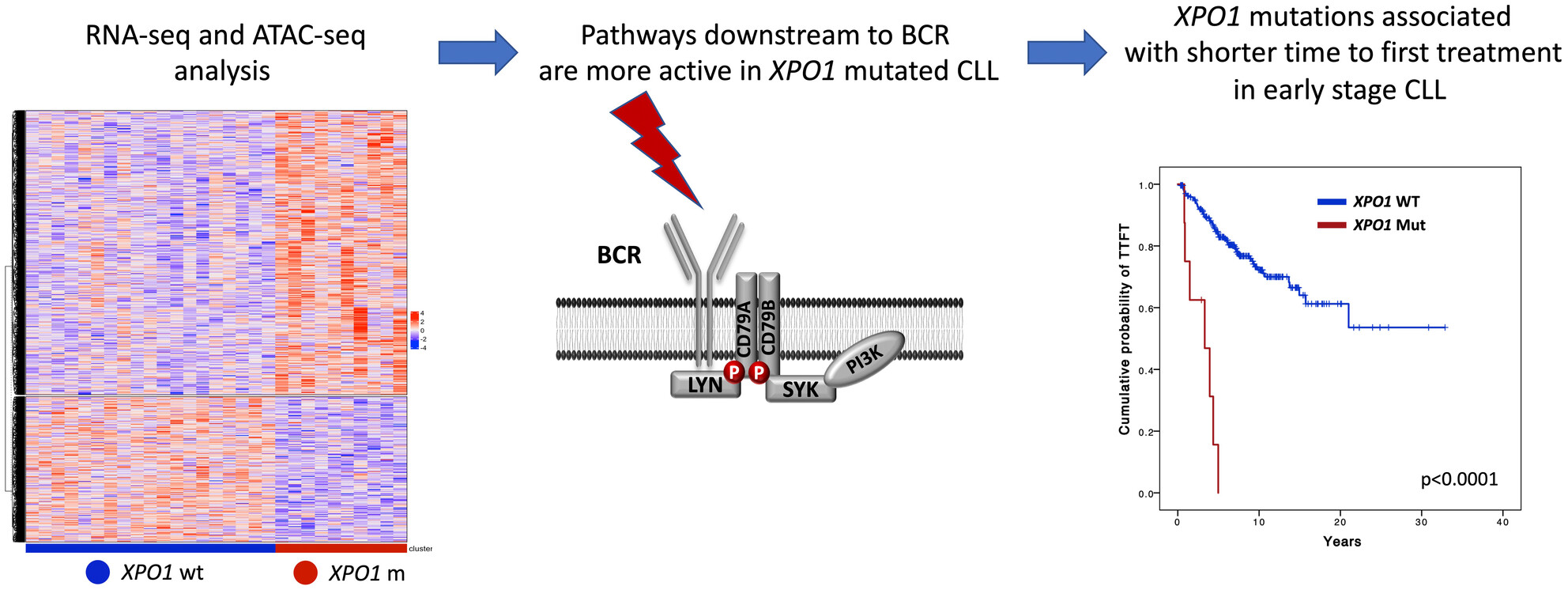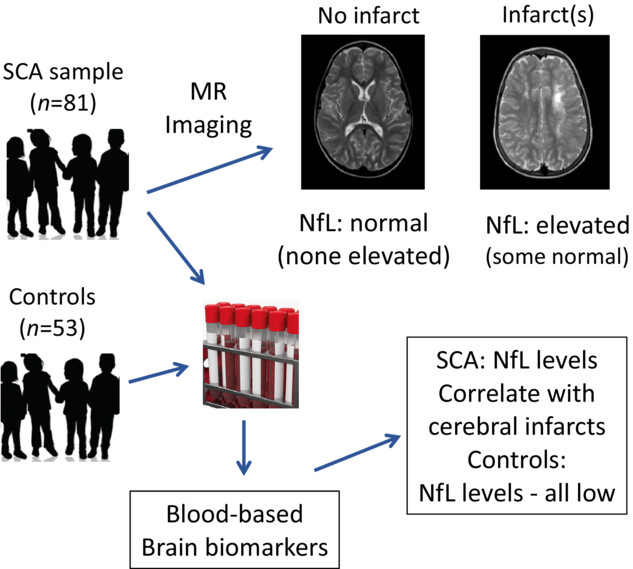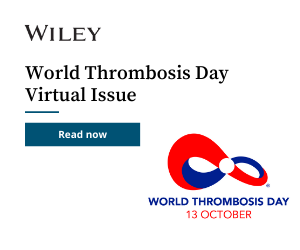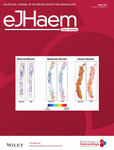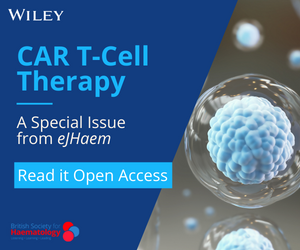Journal list menu
Export Citations
Download PDFs
Issue Information
IMAGES IN HAEMATOLOGY
Ocular and central nervous system relapse of Blastic Plasmacytoid Dendritic Cell Neoplasm
- Pages: 345-346
- First Published: 05 September 2023
COMMENTARIES
Histiocytic neoplasms: Going, going, but not quite gone
- Pages: 347-348
- First Published: 17 August 2023
Haematolymphoid malignancies: It is not important WHO we are but WHERE we go from here
- Pages: 349-350
- First Published: 21 August 2023
Venous thromboembolism in multiple myeloma: Increasing evidence in support of direct oral anticoagulants
- Pages: 351-352
- First Published: 15 August 2023
Acute myeloid leukaemia in Afghanistan: Understanding an unfamiliar landscape
- Pages: 353-354
- First Published: 23 August 2023
REVIEWS
Congenital fibrinogen disorders: Strengthening genotype–phenotype correlations through novel genetic diagnostic tools
- Pages: 355-368
- First Published: 15 August 2023
A comparison of the International Consensus and 5th WHO classifications of T-cell lymphomas and histiocytic/dendritic cell tumours
- Pages: 369-383
- First Published: 30 June 2023
SHORT REPORTS
COVID-19
Transient increase in platelet counts associated with COVID-19 infection during TPO-RA as the second-line treatment in children with ITP
- Pages: 384-388
- First Published: 23 August 2023
Haematological malignancy - Clinical
Outcomes after interruption of targeted therapy in patients with histiocytic neoplasms
- Pages: 389-394
- First Published: 03 July 2023
ORIGINAL PAPERS
Haematological malignancy - Clinical
Direct oral anticoagulants versus aspirin for primary thromboprophylaxis in patients with multiple myeloma undergoing outpatient therapy: A systematic review and updated meta-analysis
- Pages: 395-403
- First Published: 02 August 2023
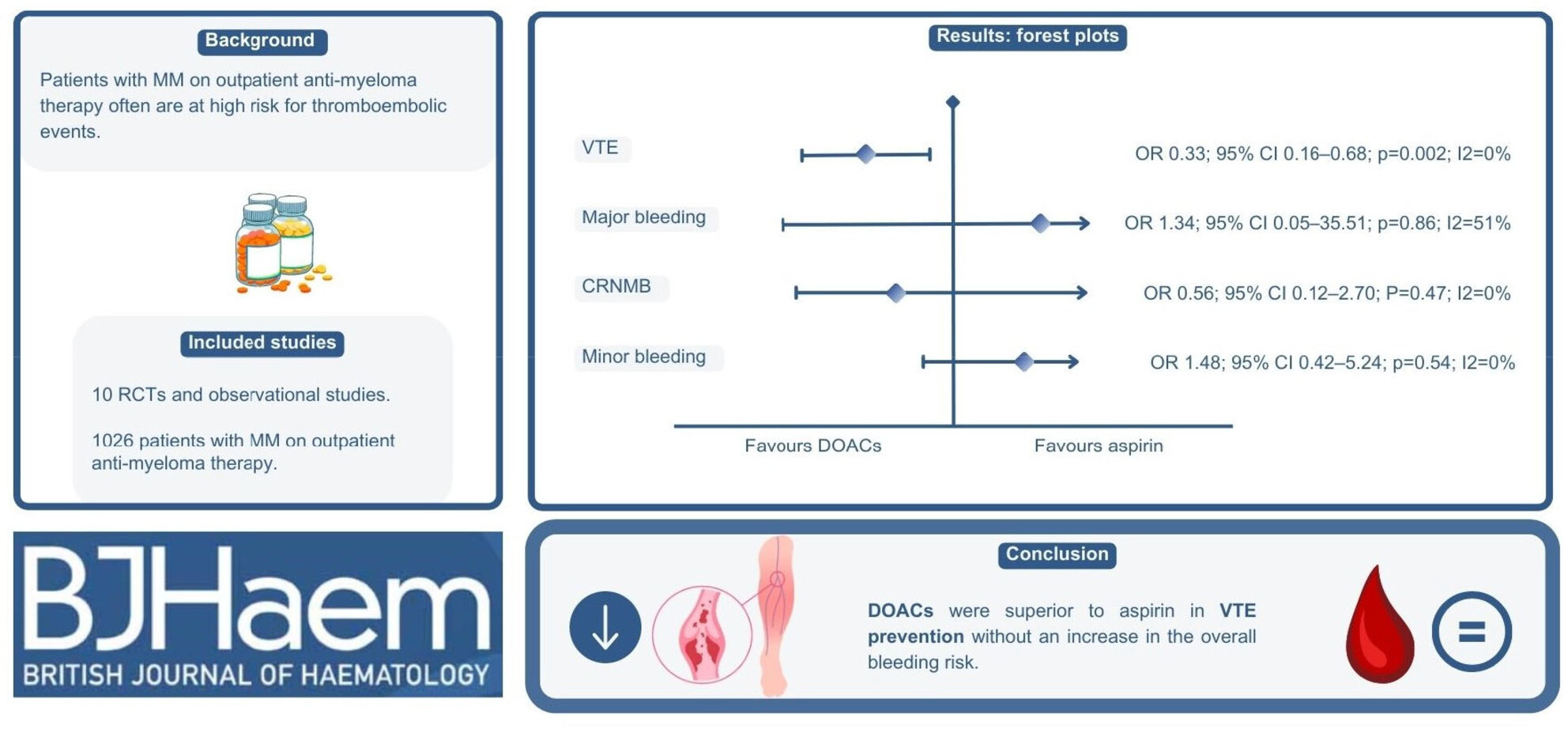
Patients with multiple myeloma (MM) undergoing disease-directed therapy are at an increased risk of venous thromboembolism (VTE) compared to the general population. In this setting, current guidelines suggest low-dose direct oral anticoagulants (DOACs) as an alternative to aspirin for primary thromboprophylaxis. Our systematic review and meta-analysis of selected randomised controlled trials and observational studies demonstrated a reduced occurrence of VTE with DOACs in comparison to aspirin, with no associated rise in bleeding events. However, these results should be interpreted with caution, considering the heterogeneous baseline population characteristics and potential biases/confounders from observational studies. Further research is essential to determine the optimal thromboprophylaxis strategy, especially for high-risk individuals.
Demographic and clinical characteristics of acute myeloid leukaemia diagnosed and treated at the tertiary level in Afghanistan
- Pages: 404-410
- First Published: 23 August 2023
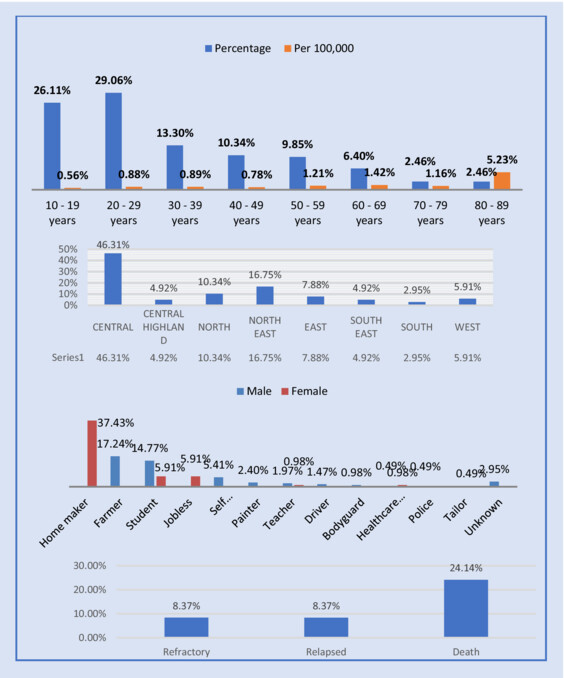
The median age at diagnosis was 27 years. Housewives represented the largest subset of patients from an occupational point of view constituting 37.44% of the total sample population and 81.72% of the female population, followed by 20.69% patients who were students of which 14.77% were male and 5.91% were female, and 17.24% who were farmers, which constituted 31.81% of the male population. Similarly, 64.53% of the individuals received standard 7 + 3 induction regimen, 10.68% of those received 5 + 2 re-induction chemotherapy, 10.84% who were diagnosed with acute promyelocytic leukaemia received all-trans-retinoic acid + arsenic trioxide, while 5.42% of patients defaulted chemotherapy.
SHORT REPORTS
Haematological malignancy - Clinical
Outcomes of patients with light chain (AL) amyloidosis after failure of daratumumab-based therapy
- Pages: 411-415
- First Published: 14 August 2023
ORIGINAL PAPERS
Haematological malignancy - Clinical
XPO1 mutations identify early-stage CLL characterized by shorter time to first treatment and enhanced BCR signalling
- Pages: 416-425
- First Published: 14 August 2023
Haematological malignancy - Biology
Tumour-derived exosomes promote the induction of monocytic myeloid-derived suppressor cells from peripheral blood mononuclear cells by delivering miR-106a-5p and miR-146a-5p in multiple myeloma
- Pages: 426-438
- First Published: 16 August 2023

The transformation of a tumour immune surveillance system into a tumour-supportive state is one of the critical events in disease development, progression, and the acquisition of therapy resistance against immunochemotherapy in multiple myeloma. In this scenario, in combination with several soluble factors secreted by myeloma cells, miR-106a-5p and miR-146a-5p contained in myeloma cell-derived exosomes play essential roles in modulating gene expression patterns, such as genes involved in interferon response, inflammation, and TNF-α signalling, and, to direct normal peripheral blood mononuclear cells to differentiate into monocytic myeloid-derived suppressor cells.
Transplantation
ATG versus PTCy in matched unrelated donor haematopoietic stem cell transplantations with non-myeloablative conditioning
- Pages: 439-445
- First Published: 10 August 2023
Impact of GVHD on lymphoma progression: Nationwide study from Japanese Society for Transplantation and Cellular Therapy
- Pages: 446-459
- First Published: 23 August 2023

The association between graft-versus-lymphoma (GVL) effect and graft-versus-host disease (GVHD)s varied between different lymphoma subtypes and their pre-transplant controls (C, D). Meanwhile, the negative impact of severe GVHDs on survival via their contribution to transplant-related mortality was still significant (A, B). Since GVL effect and GVHDs have not yet been successfully separated in the clinical settings, transplant outcomes were still a consequence of the balance between GVL and GVHDs. However, it was clear that the management of GVHDs within a limited activity should be prioritized regardless of the cases.
Haemoglobinopathies
Neurofilament light chain: A potential biomarker for cerebrovascular disease in children with sickle cell anaemia
- Pages: 460-467
- First Published: 15 August 2023
Haematopoiesis
A longitudinal analysis of paroxysmal nocturnal haemoglobinuria-type cells in patients with bone marrow failure: Results of a prospective multi-centre study in Japan
- Pages: 468-476
- First Published: 31 August 2023
SHORT REPORTS
Haematopoiesis
Human ‘knockouts’ of CSF3 display severe congenital neutropenia
- Pages: 477-480
- First Published: 23 August 2023
LETTERS TO THE EDITOR
Myelodysplastic syndrome and multiple solid tumours in an individual with compound heterozygous deleterious FANCM variants: A case report and review of the literature
- Pages: 481-484
- First Published: 22 August 2023
A novel SLC1A1-RIC1 fusion sensitive to asparaginase-based therapy in natural killer/T-cell lymphoma
- Pages: 485-489
- First Published: 01 September 2023
LETTERS TO THE EDITOR - ONLINE ONLY
IDH1/2 inhibitor monotherapy in blast-phase myeloproliferative neoplasms: A multicentre experience
- Pages: e87-e92
- First Published: 03 August 2023
Correlates of splenic T2* measurements in transfusion-dependent thalassaemia and comparison between non-splenectomised and splenectomised patients
- Pages: e93-e97
- First Published: 09 August 2023




